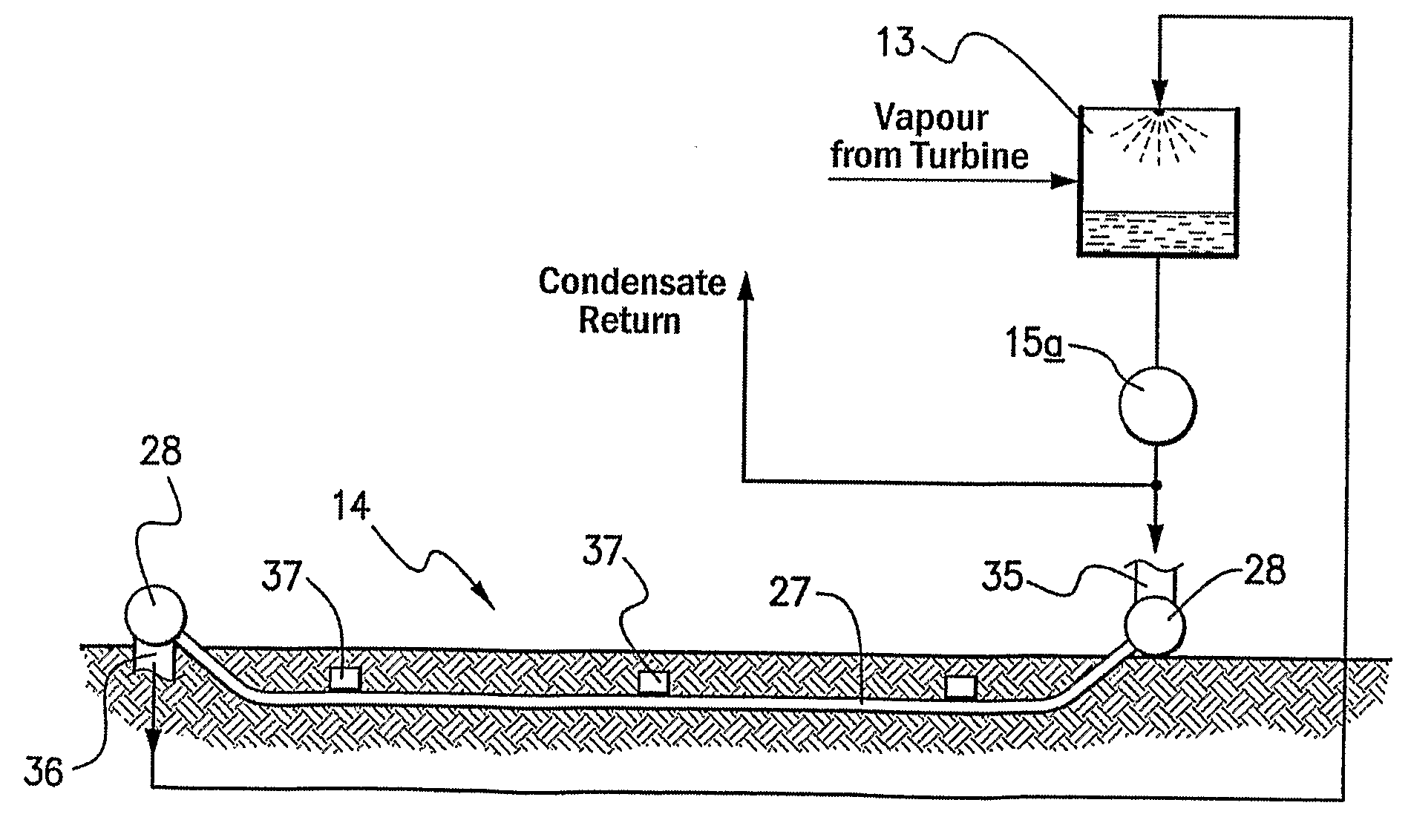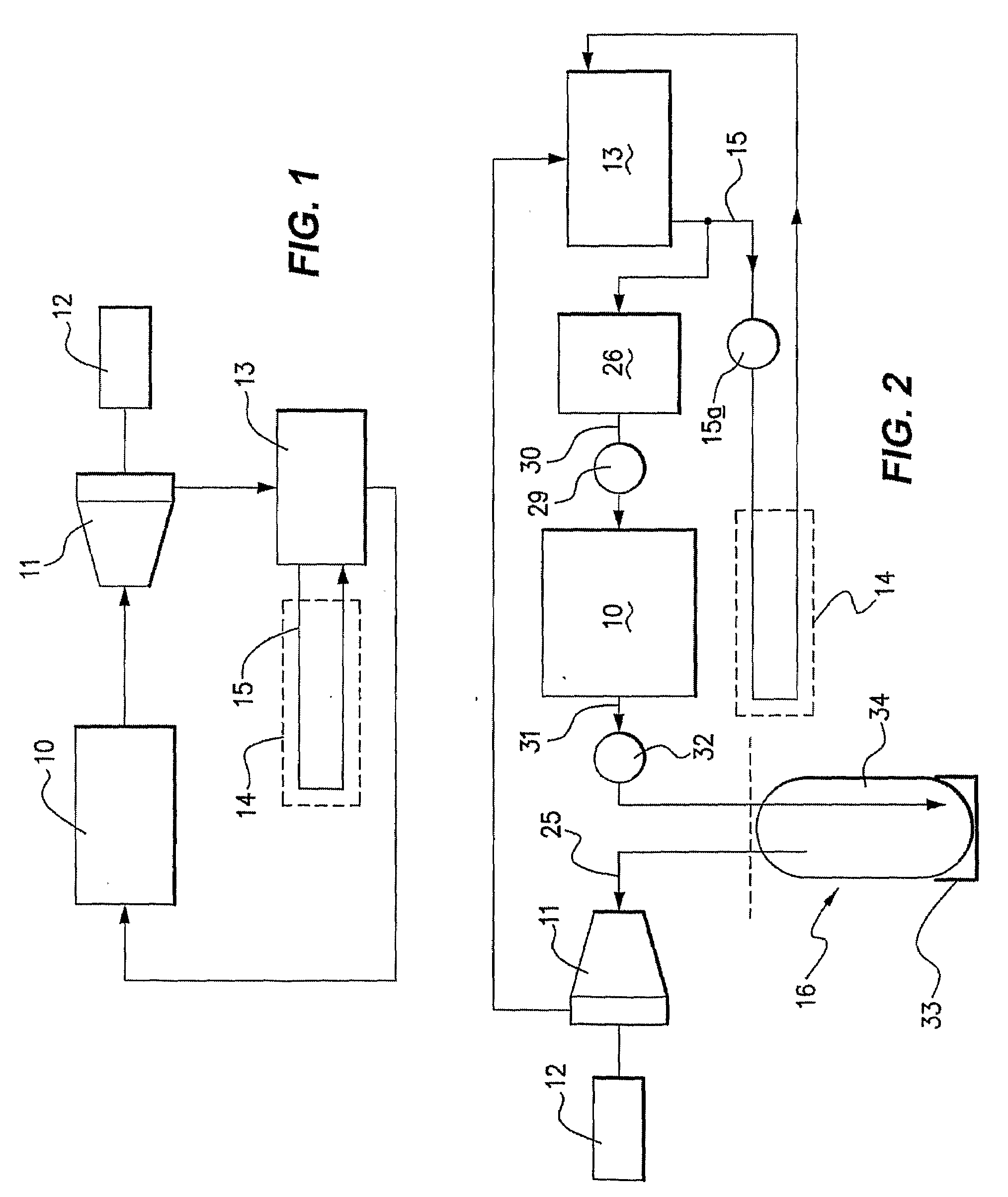Thermal power plant incorporating subterranean cooling of condenser coolant
a technology of condenser and cooling tower, which is applied in the direction of machines/engines, light and heating equipment, transportation and packaging, etc., can solve the problems of dry cooling process less efficient than evaporative cooling, evaporative cooling towers lose water to evaporation, etc., to achieve maximum heat dissipation
- Summary
- Abstract
- Description
- Claims
- Application Information
AI Technical Summary
Benefits of technology
Problems solved by technology
Method used
Image
Examples
Embodiment Construction
[0029]As illustrated in FIG. 1, the thermal power plant comprises a heating system 10 in which heat is transferred to a working fluid. The heating system utilizes solar energy, as hereinafter described more fully with reference to FIGS. 3 to 5.
[0030]The working fluid may comprise a hydrocarbon or such other fluid as is suitable for expanding through a turbine, but the working fluid preferably comprises water or, in its vapour / gaseous phase, steam. The working fluid when heated is delivered to a turbine 11 which is employed to drive an electrical generator 12 and, having expanded through the turbine, the working fluid is then passed to a condenser 13 where residual vapour is condensed to a liquid phase. From the condenser 13 the working fluid is returned to the heating system 10.
[0031]Both the turbine 11 and the condenser 13 are selected to meet design parameters as determined, for example, by required output power, operating temperature and operating pressure. The condenser 13 may c...
PUM
 Login to View More
Login to View More Abstract
Description
Claims
Application Information
 Login to View More
Login to View More - R&D
- Intellectual Property
- Life Sciences
- Materials
- Tech Scout
- Unparalleled Data Quality
- Higher Quality Content
- 60% Fewer Hallucinations
Browse by: Latest US Patents, China's latest patents, Technical Efficacy Thesaurus, Application Domain, Technology Topic, Popular Technical Reports.
© 2025 PatSnap. All rights reserved.Legal|Privacy policy|Modern Slavery Act Transparency Statement|Sitemap|About US| Contact US: help@patsnap.com



